A Northeast Vision Of The Great Northwestern – Part 2
Olympic National Park in Washington State has a small beautiful area of scenic Pacific coastline. In a previous post, I mentioned a persistent haze from forest fires that caused us some issues in Mount Rainier. Along the Pacific coast it was the fog. That fog was relentless at times, either obscuring the beaches completely, or just bad enough to flatten the light and hide any details in the beautiful sea stacks.
When the fog lifts (even partially), one can see that these rugged beaches are a small but significant part of the almost million acre Olympic National Park. Fortunately for this trip we elected to concentrate on a few areas in Washington instead of covering the entire Pacific Northwest. This allowed us to visit the Olympic Peninsula beaches many times. Usually the infamous fog was so thick we couldn’t see a thing. Once in awhile though, conditions allowed enough of a view to create some interesting compositions.
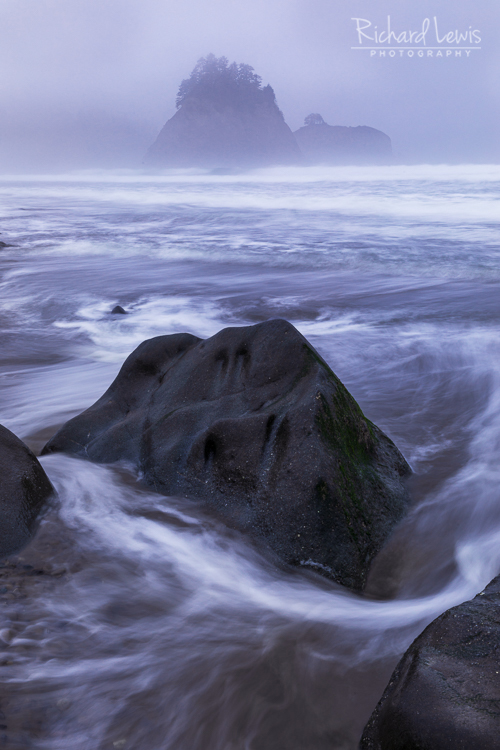
Fog On Rialto Beach by Richard Lewis 2018
Second Beach Sunset
Persistence can pay off. On our last evening in the area we were really hoping to see a sunset from one of the beaches. After days of arriving at places that were too socked in with fog, we decided to take a hike to a beach with the catchy name of Second Beach. My theory was that this beach would be a good place to be because it faced south. Not only would we be in a great position for a sunset along the beach, but the southern exposure might mean less fog.
So much for theories. When we arrived… more fog. It also looked like the sunset we’ve been waiting 3 days to see was going to be obscured, again. But then…
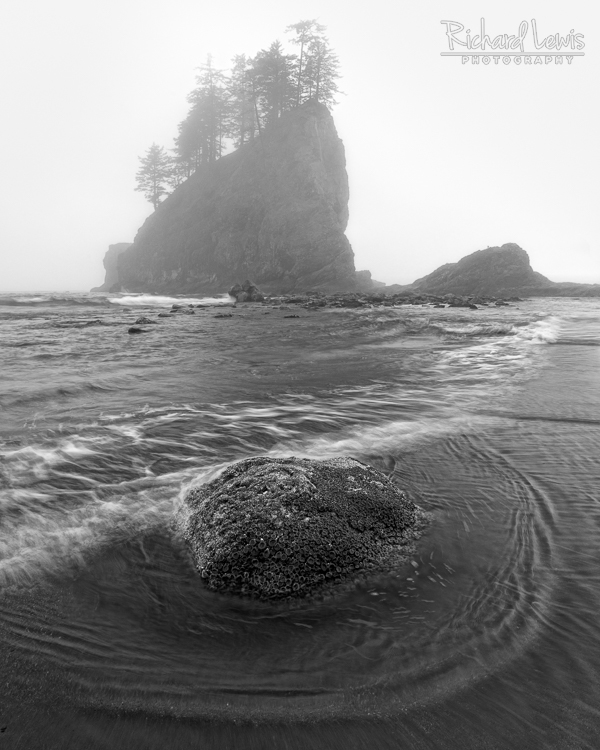
Second Beach Fog by Richard Lewis 2018
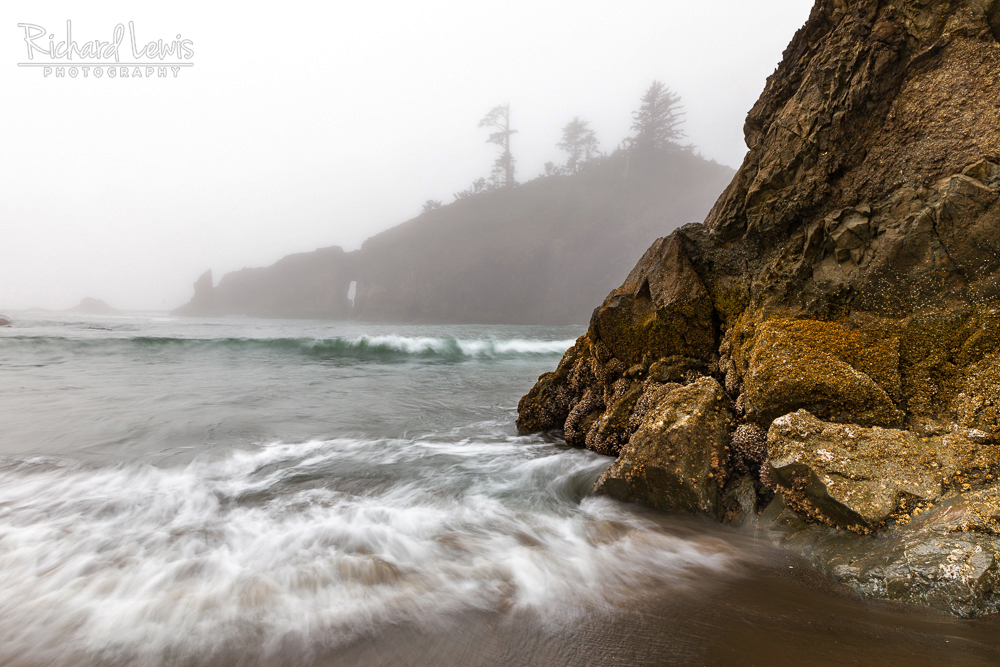
Beach Fog by Richard Lewis 2018
…shortly after the above photographs were made, a small break in the fog appeared along the horizon. It was about an hour before sunset and it looked like the fog might clear in time. It could not have been better. The beach we were on had a rock wall with an natural arch. As the sun was low on the horizon, it shown briefly through the arch and created a beautiful glow through the remaining mist.
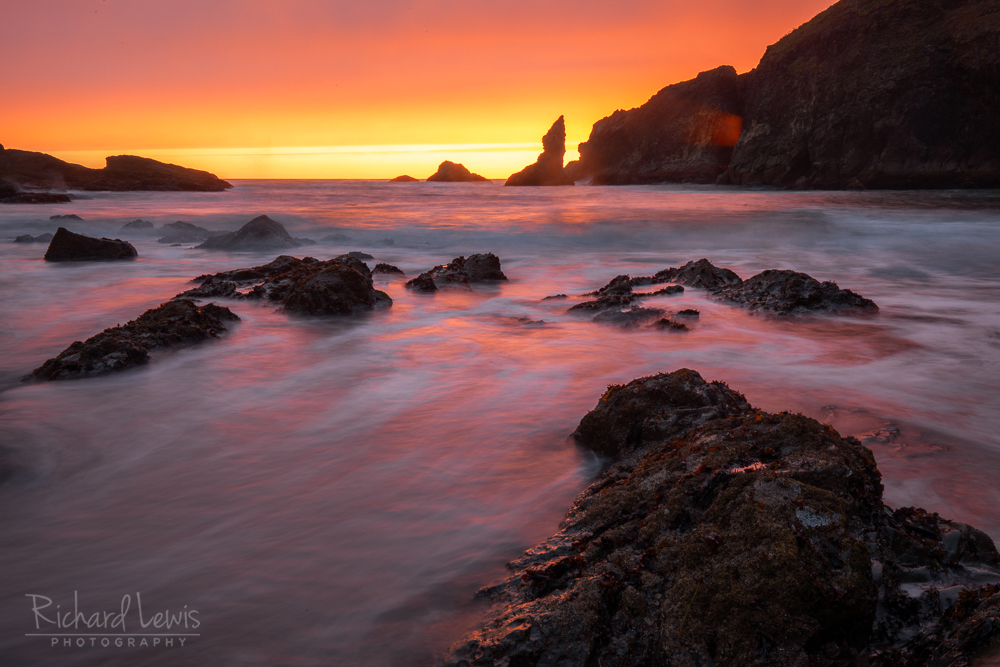
Sun Beam Through The Arch by Richard Lewis 2018
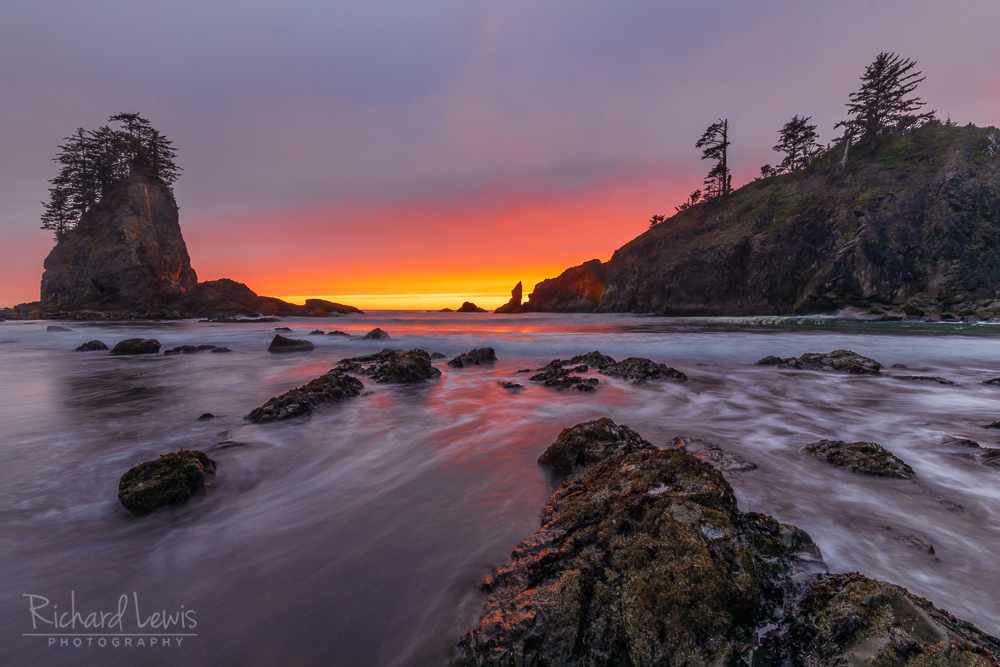
Sunset In Olympic National Park by Richard Lewis 2019
I was shooting with a 16-35mm wide angle lens and didn’t want to change lenses which could possibly mean missing the glow and exposing the inside of my camera to the windy, sandy, and salty environment of the beach. Fortunately, my wife, Vivian, had the zoom lens with a slight telephoto on her camera and caught the glow. Please welcome her first photograph on this blog.
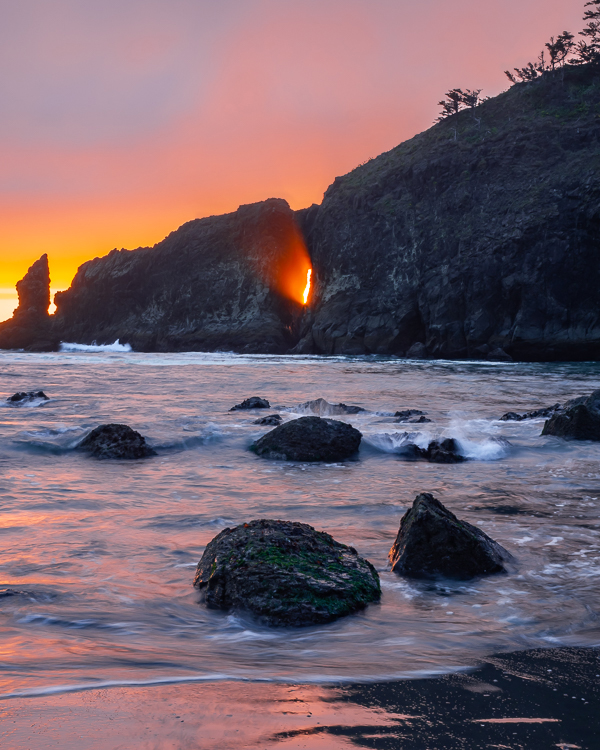
Second Beach Special Glow by Vivian Lewis 2018
As sunset became twilight the beauty didn’t stop. Sunset colors can be very dramatic, but the solemn quiet of twilight has always appealed to me more. We decided to skip dinner and hang around until dark.
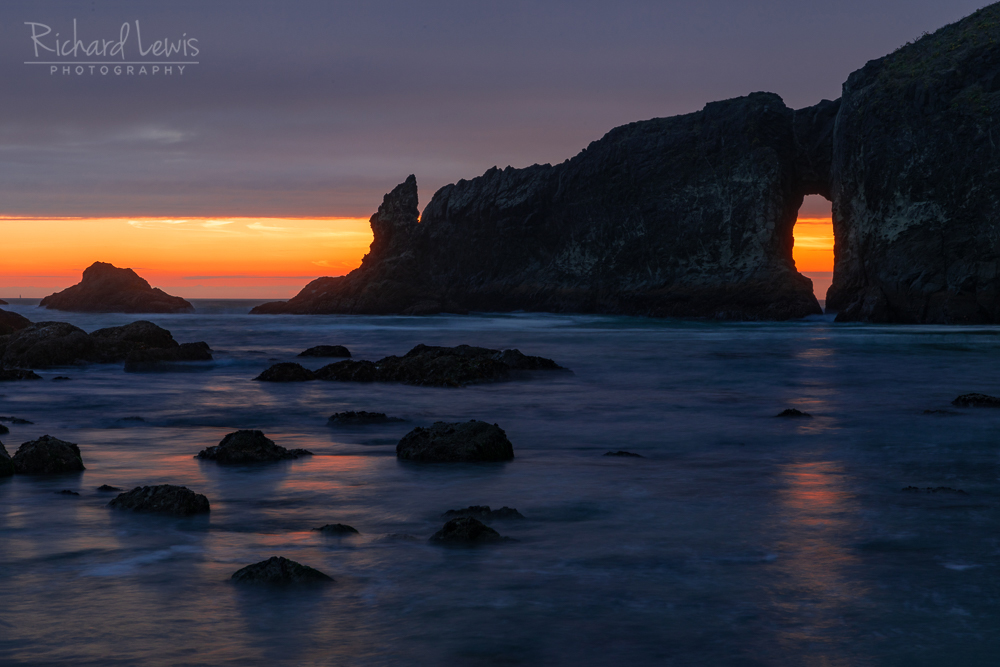
Twilight Through The Arch by Richard Lewis 2018
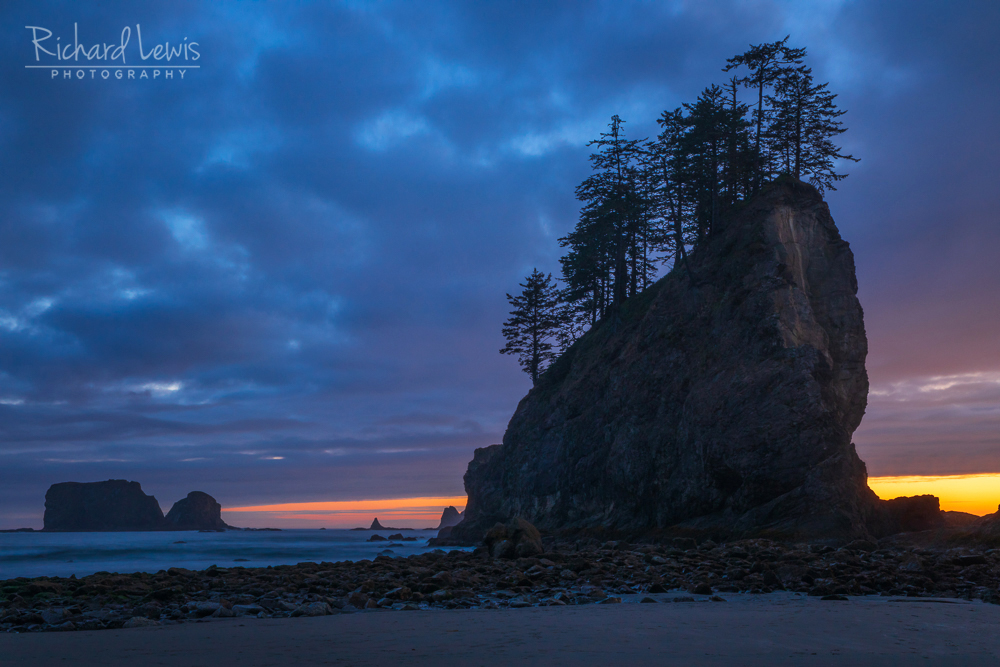
Second Beach Twilight by Richard Lewis 2018
As we hiked back to the car through a dark forest with our headlamps, we felt lucky to have been there to see this amazing sunset at this beautiful beach in Olympic National Park.
Was it luck that we were on that beach for this sunset? Maybe the choice of beach was lucky. But, we also modified our original plan and added more time to this area, because we knew rain and fog would be an issue. If we stuck to that original plan, we would have left the coast and missed this beautiful sunset.
The Hoh Rain Forest
We took a break from the coastal fog one day and headed out to the Hoh Rain Forest. It rained off and on the entire time we were there, but we didn’t mind because it is a rain forest, right? The rain also produced some nice forest light. Photographing in a rainforest isn’t much different that the New Jersey Pinelands. It’s a fertile forest teaming with trees and plant life which makes it messy. Finding compositions that are pleasing means creating order within the disorder to construct a visual flow through the photograph.
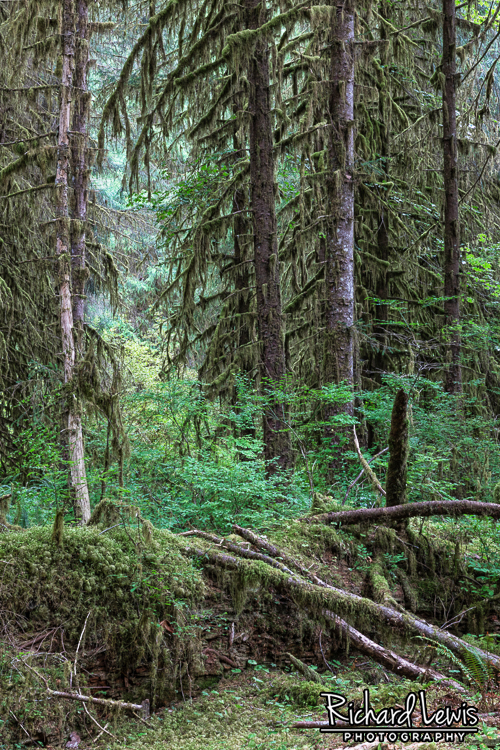
Fallen Giant by Richard Lewis 2018
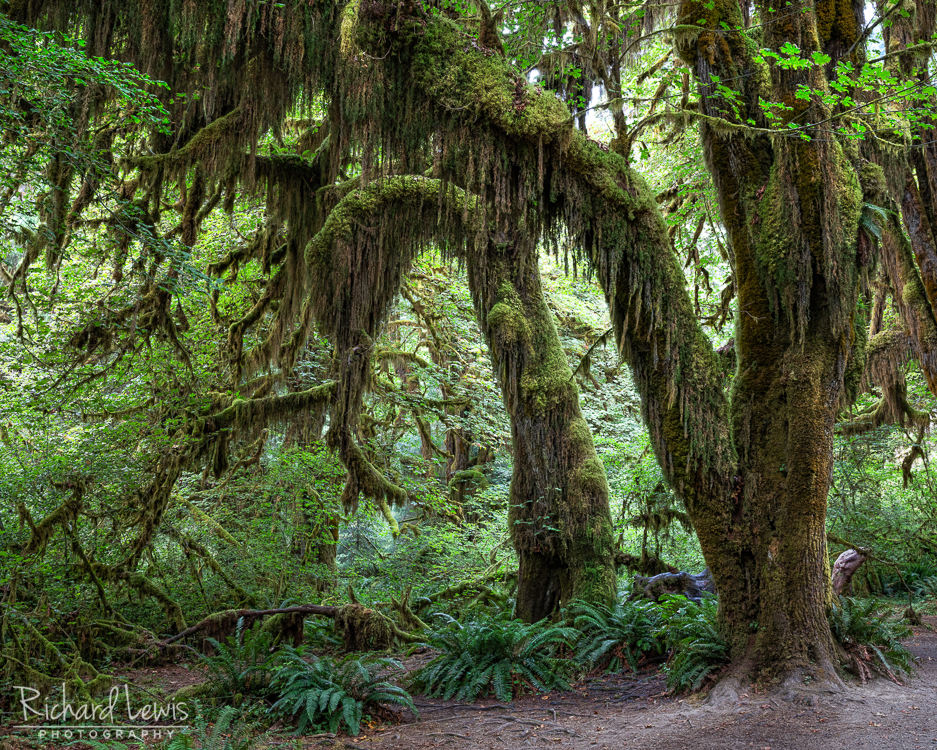
Hoh Rain Forest Landscape by Richard Lewis 2018
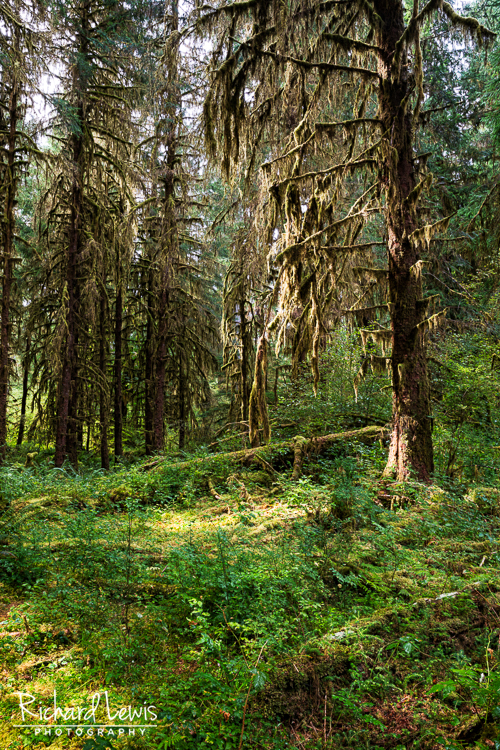
Hoh Rain Forest Mosses by Richard Lewis 2018
Planning a Photography Trip
I was recently asked to share a bit about how we plan a trip like this. The answer is complicated and is now a presentation, but it’s a good question and I thought it would be nice to share some highlights. Another question I get sometimes is why not just take a photography tour or workshop. That’s great for some people and I do it from time to time. But not being with a group provides us with flexibility to go places and do what we want at our own pace. Plus, we don’t go to an area just to take pictures. Hiking and exploring are things we also enjoy when travelling. We bond with an area and its landscape which makes for better photographs.
Here are a couple of tips for planning a photography trip.
- Get to know the area. It’s hard to scout an area when you are thousands of miles away, but not impossible. I spend some time with guidebooks, Google Earth, travel and photography websites, and looking at other images created in an area. From there my wife and I create a list of things we want to do, see and photograph.
- Get to know the conditions. Different areas have different things going on at different times of year. Knowing the climate, weather and actual conditions in the area will influence what and where you want to photograph. On this trip we knew we were on the edge of the rainy season and decided to travel to fewer places and spend more time in the ones we did visit.
- Use Apps. There are great photography apps like PhotoPills and Photographer’s Ephemeris which help you know where and when the sun/moon rises and sets at the locations you are going to shoot in. Weather and radar apps tell you the actual weather conditions at a location. Knowing what to expect weatherwise helps you plan your shooting positions and what equipment to bring.
- Don’t over plan. It’s great to have a detailed plan, but it’s also important to know when to throw the plan away and respond to opportunities.
- Arrive early and leave late. This is advice often given to young people starting their careers and it works for photography too. To paraphrase the famous Wayne Gretzky quote: You can’t photograph something if you aren’t there. Being there does two things. The first and obvious thing is that you may see photographs you don’t expect. The second and more important thing is getting to know and experience what you are photographing. As photographers we can miss where we are because we are only seeing it through a viewfinder.
Taking the time just watch the light on the landscape is such a spiritual experience, that it drives my photography more than the conscious thoughts I have about composition and where to set the f/stop. – Me
Enjoy!
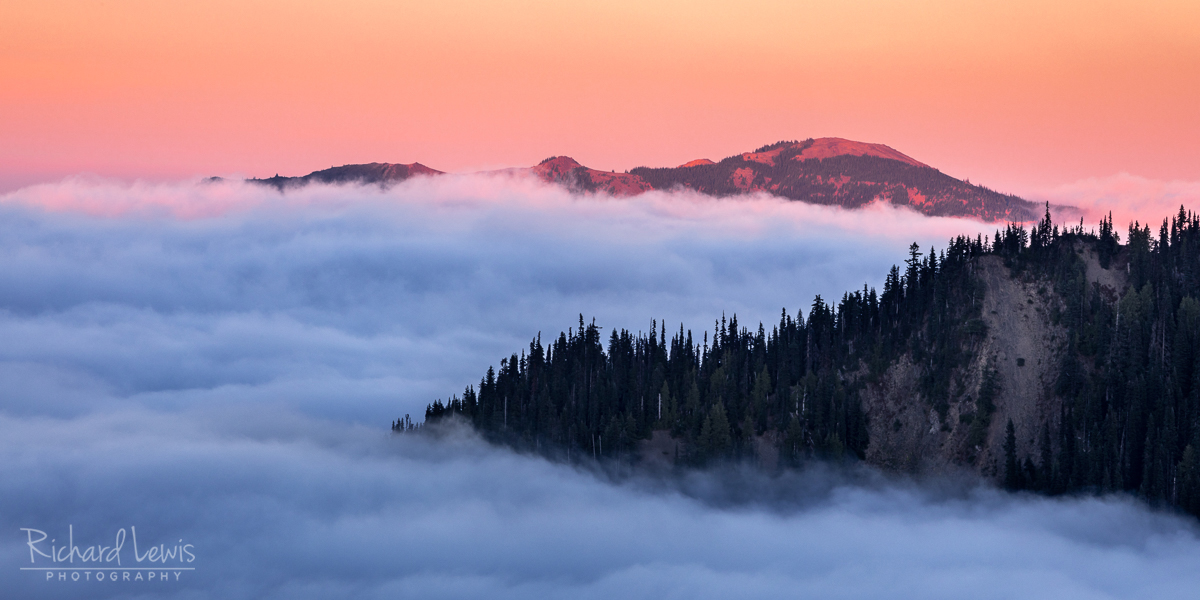
Fog Light And Shadow by Richard Lewis 2018

Simply stunning. And, Viv, you go girl!
Thanks. She is doing great don’t you think?
Rich, I so enjoy your site. And I more than enjoy your photographs and your comments as you take your readers and followers along with you on photographic Adventures. Jo Ann Pallay
Thanks Joann. I enjoy doing this a lot and your comment inspires me to keep going.
Wow, great work and I especially like Vivian’s shot of the “Second Beach Special Glow”
Thanks Lou. I’m pretty fond of that shot too. I’m glad she was using a longer zoom lens to get closer to that glow.
Excellent post and fun to revisit this park through your photographs. You did a great job with the water movement and in the rain forest … I found the chaos there to be very challenging.
Thanks Denise, I agree with you about the chaos. It was extremely challenging although working in the NJ Pinelands for so many years gave me some help with organizing what was in the viewfinder.